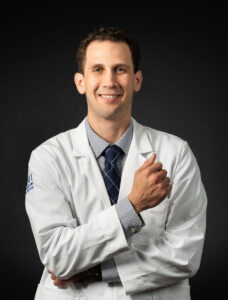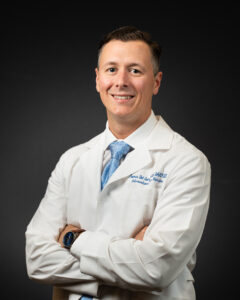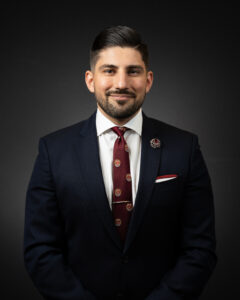Spinal Stenosis Treatment Options for Residents of Freehold, NJ
Reviewed by AOSMI’s Fellowship Trained, Orthopedic Spine Surgeon, Dr. Justin Elkrief
WHAT IS SPINAL STENOSIS?
Spinal stenosis, or narrowing, is often a result of age-related degeneration of the spinal canal. This condition does not always produce symptoms; in fact, some people are completely unaware of it. However, because the space within the spinal canal, which houses the spinal cord and a series of sensitive nerve roots, is very limited, spinal stenosis can sometimes lead to nerve compression that causes back pain, leg weakness, and walking difficulties. The experienced spine specialists at Advanced Orthopedic Sports Medicine Institute in Freehold, NJ, offer a full range of conservative treatment options to alleviate spinal stenosis symptoms like these, as well as surgical procedures designed to address their underlying cause.
SPINAL STENOSIS TREATMENT OPTIONS AT AOSMI
NON-SURGICAL TREATMENT OPTIONS FOR SPINAL STENOSIS
The board-certified, fellowship-trained spine surgeons and other medical professionals at AOSMI are committed to practicing conservative and non-surgical orthopedic medicine whenever possible. Our spine doctors and pain management specialists closely work together onsite at our Freehold, NJ clinic to treat spinal stenosis and related conditions with the following non-surgical options:
- Medications
- Medications: Medications, such as nonsteroidal anti-inflammatory drugs (NSAIDs) and pain relievers, can help manage pain, reduce inflammation, and improve your comfort level, contributing to the relief of spinal stenosis symptoms.
- Physical Therapy
- Physical Therapy: Exercise-based physical therapy is tailored to strengthen supportive muscles, improve flexibility, and enhance posture. This approach aims to alleviate pressure on the spine, enhance mobility, and reduce discomfort associated with spinal stenosis.
- Massage Therapy
- Massage Therapy: Massage therapy can promote muscle relaxation, improve blood circulation, and reduce muscle tension around the affected areas. By targeting specific muscle groups, massage therapy may offer temporary relief from spinal stenosis-related discomfort.
- Chiropractic Care
- Chiropractic Care: Chiropractic treatments focus on realigning the spine to alleviate pressure on nerves and joints. For spinal stenosis patients, chiropractic care may help improve spinal mobility, reduce pain, and enhance overall spine health.
- Acupuncture
- Acupuncture: Acupuncture involves inserting fine needles into specific points to stimulate the body’s natural healing processes. In the context of spinal stenosis, acupuncture may help manage pain, reduce inflammation, and promote relaxation.
In general, we view spinal stenosis surgery as a last resort, recommending it only after non-surgical treatments do not produce sufficient results.
COMMON SPINAL STENOSIS SURGERIES
When necessary, the spine surgeons at AOSMI in Freehold, can perform the following types of surgery to address spinal stenosis:
- Laminectomy – This decompression procedure is designed to reduce pressure on the spinal cord or an affected nerve root by creating more space within the spinal canal. To do so, a surgeon may remove the lamina (bony vertebral arch) or a bone spur that has formed on a spinal bone.
- Spinal fusion – If spinal degeneration has progressed to the point that it is creating instability, a fusion procedure may be performed along with decompression surgery. By helping two vertebral bones to grow solidly together, spinal fusion can help alleviate pain and prevent further nerve compression.
After spinal stenosis surgery, the spine specialists at Spine Care New Jersey can develop an individualized physical therapy program to help a patient gradually build and maintain spinal strength, endurance, and flexibility.
To learn more about treatment options for spinal stenosis, contact AOSMI to schedule an appointment with a spine specialist at our office in Freehold, NJ.
Frequently Asked Questions About Spinal Stenosis Symptoms & Treatment
What causes spinal stenosis?
Are there different types of spinal stenosis?
What are the worst spinal stenosis symptoms?
What is considered severe spinal stenosis?
How do you fix spinal stenosis without surgery?
Is spinal stenosis a permanent disability?
Frequently Asked Questions About Spinal Stenosis Symptoms & Treatment
What causes spinal stenosis?
Spinal stenosis is primarily caused by the narrowing of the spinal canal, which can lead to compression of the spinal cord and nerves. This narrowing is often a result of age-related degeneration, including the growth of bone spurs, thickening of ligaments, and herniated discs. Other factors such as genetics, injuries, and certain medical conditions may contribute to the development of spinal stenosis.
Are there different types of spinal stenosis?
Yes, there are different types of spinal stenosis, and one specific type is cervical spinal stenosis. Cervical spinal stenosis refers to the narrowing of the spinal canal in the neck region (cervical spine), which can result in compression of the spinal cord and nerve roots. Lumbar spinal stenosis affects the lower back (lumbar spine) and is more common, but cervical spinal stenosis can also cause significant symptoms and require specific treatment approaches.
What are the worst spinal stenosis symptoms?
The severity of spinal stenosis symptoms can vary, but the worst symptoms often include:
- Progressive and persistent pain in the neck or lower back
- Radiating pain, numbness, tingling, or weakness in the arms or legs
- Difficulty walking or maintaining balance
- Bowel or bladder dysfunction in severe cases
These symptoms can significantly impact mobility, daily activities, and overall quality of life.
What is considered severe spinal stenosis?
Severe spinal stenosis refers to a significant narrowing of the spinal canal that results in substantial compression of the spinal cord or nerve roots. This compression can lead to pronounced neurological symptoms such as severe pain, muscle weakness, numbness, and functional limitations. Severe spinal stenosis may require more aggressive treatment approaches, including surgical intervention, to relieve pressure on the affected structures.
How do you fix spinal stenosis without surgery?
Non-surgical approaches to treating spinal stenosis include:
- Medications: Pain relievers, anti-inflammatories, and muscle relaxants to manage symptoms.
- Physical Therapy: Targeted exercises and stretches to improve spinal flexibility, strengthen muscles, and alleviate pressure on the spine.
- Chiropractic Care: Manual adjustments to improve spinal alignment and reduce nerve compression.
- Epidural Steroid Injections: Injections of anti-inflammatory medication to provide temporary pain relief and reduce inflammation around the affected area.
Is spinal stenosis a permanent disability?
Spinal stenosis can cause varying degrees of disability depending on its severity and the effectiveness of treatment. While some individuals may experience long-term symptoms, many can find relief and manage their condition through non-surgical treatments or, in more severe cases, surgical intervention. The impact of spinal stenosis on one’s ability to perform daily activities and work tasks can vary, and disability status is typically evaluated on a case-by-case basis.
Find your Provider










